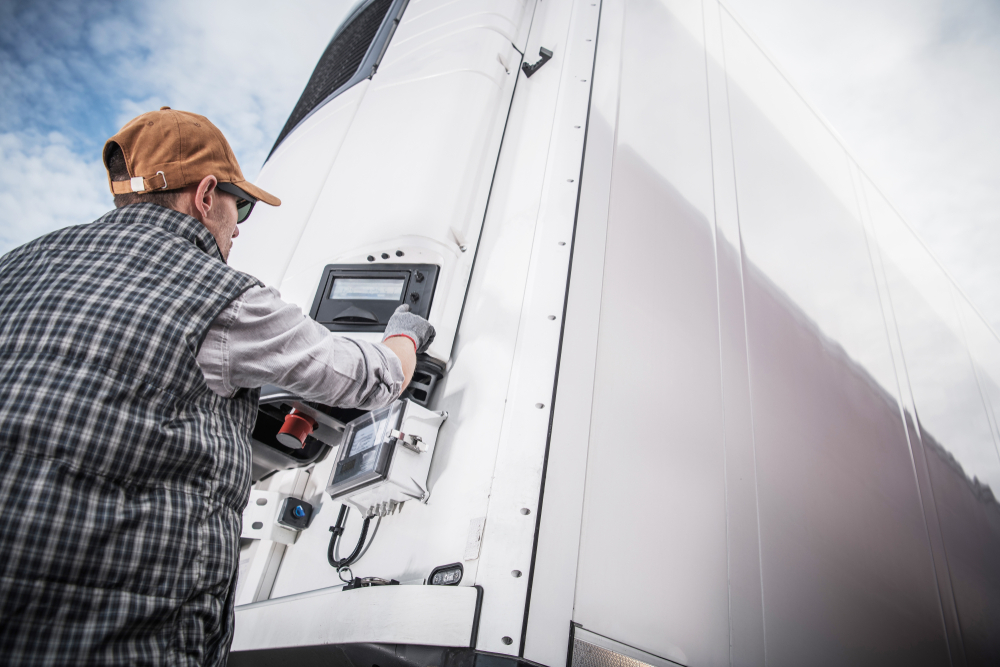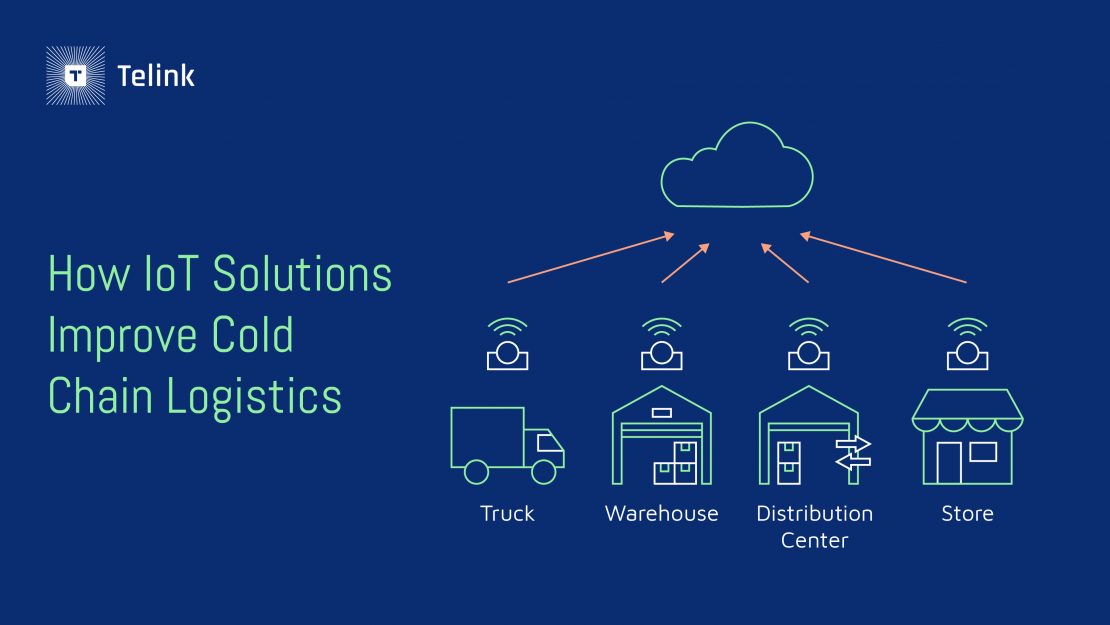



PLEASE ROTATE ME


Telink Staff
July 8, 2020
Applications

A resilient cold chain is essential for safely storing, transporting, and distributing pharmaceuticals and equipment during the COVID-19 pandemic. Here’s how IoT solutions can help.
A cold chain is an end-to-end system for storing, transporting, and distributing pharmaceuticals and perishable foods in climate-controlled environments. Temperature and humidity levels must be strictly maintained across the cold chain to preserve the shelf-life and safety of perishable food products and pharmaceuticals.
A strong cold chain emerges from seamless collaboration between producers and distributors, transportation companies, and processing centers, and the ongoing COVID-19 pandemic has threatened to disrupt these supply lines at a variety of points. Consumers around the world depend on cold chains for pharmaceuticals, perishables, and high-value products, and disruptions to cold chains can have serious public health consequences. Fortunately, adopting IoT solutions can help cold chains adapt their operations and hold strong in a time of global uncertainty.
An effective cold chain consists of many interconnected moving parts and typically requires a heavy capital equipment investment. Cold storage facilities store shipments until they are ready for transport via trucks equipped with advanced cooling systems. Then, the shipments are moved to cold processing centers before they are distributed. Cold chain logistics providers — companies responsible for keeping the cold chain friction-free — are essential not only to the pharmaceutical and food processing industries, but the global economy at large.
For example, meat is a highly perishable commodity whose consumption continues to skyrocket around the world. In the United States, the average person consumes 220 pounds of meat and poultry per year, and global meat consumption is expected to reach 376 million tons by 2030. In order to stay viable, all meats must be kept below 40°F during transport and reach stores within two days of leaving the plant — a virtual impossibility without a strong cold chain.
Additionally, the cold chain plays a key role in delivering essential medicine and equipment to care providers and patients. Pharmaceuticals — especially vaccines — must be shipped at specific temperatures. If a vaccine is exposed to conditions that are too hot or too cold, it can lose its potency at best and become unsafe to administer at worst. In fact, in 2017, 15 South Sudanese children died of complications related to the improper storage of a measles vaccine. As vaccines and treatments for COVID-19 become available, a reliable cold chain will become a key part of combating the rapidly unfolding pandemic in nearly every country in the world.
As supply lines expand and cold chain logistics become more complex, in-transit and storage monitoring, location tracking, and capital equipment maintenance consistently rank among the industry’s top challenges. Controlling shipment conditions presents a particularly stubborn challenge, as temperature and humidity variations are easy to cause but hard to fix. A single driver making multiple deliveries can open and close their truck’s doors many times during their route, and the resulting fluctuations — however seemingly insignificant — can have disastrous implications for the remaining goods.
About 70 percent of all food consumed in the U.S. passes through the cold chain, and an astounding 25 percent of that food ends up wasted due to ineffective temperature monitoring. When perishables, pharmaceuticals, and high-value goods are exposed to unsuitable temperature and humidity conditions, there is no way to return these goods to stasis without further compromising their integrity.
Proper capital equipment maintenance is essential to ensuring cold chain reliability and keeping costs down. An ill-timed truck breakdown or cooling equipment malfunction can create heavy maintenance and replacement costs for stakeholders across the cold chain. While a high-quality industrial chiller might last for 20 years or more, if suppliers don’t have a reliable way of gathering data about their equipment, they will struggle to maximize value and ensure product safety.
IoT solutions can help suppliers remedy these pain points and make the food processing and pharmaceutical industries more resilient. By integrating numerous IoT systems, cold chain technologies can transmit data to multiple stakeholders in real time. Suppliers can use IoT sensors to monitor a truck’s internal conditions — including temperature and humidity levels — and receive alerts when products experience “out-of-range” events.

In addition to temperature and humidity alerts, IoT sensors can provide proactive alerts for tilt or shock and theft. Sensors linked to customizable systems give drivers and suppliers clear visibility into their shipments and the option to respond to events in real time. When an alert sounds, a driver can contact the relevant personnel to resolve the problem as quickly as possible and salvage their shipment.
Data gathered by IoT devices can also be fed into machine learning algorithms to deliver increased automation capabilities. Temperature and humidity automation capabilities powered by smart IoT devices increase efficiency and reliability, making for a smoother, stronger cold chain. Shipping containers with GPS capabilities can notify supply chain managers about where their shipments are, providing them with the visibility to act quickly and decisively if unexpected problems occur.
The IoT sensors on chillers and other equipment also facilitate predictive maintenance. Facility managers and truck drivers can get alerts when essential capital equipment is due for a tune-up or nearing the end of its lifecycle, ensuring all the mechanical components of the cold chain are in working order before perishable food or pharmaceuticals hit the road. These are just some of the many ways that IoT technologies can change the way cold chains are managed.
Cold supply chains are already an integral part of daily life, and, as the battle against COVID-19 continues, maintaining — and, better yet, optimizing — cold chains will become an essential part of delivering life-saving public health solutions. As such, supply chain managers must do what they can now to shore up cold chains for the long haul. The IoT has the potential to revolutionize the cold chain by fortifying each link with real-time data that tightens up operations. IoT sensor manufacturers can support a smart cold chain by developing the highest quality IoT technology — which is where Telink can help.
As a leading SoC solutions provider for industrial IoT device manufacturers, we make sure the hardware at the heart of our partners’ IoT sensors is a cut above. With low energy consumption and high computing power and efficiency, Telink’s chips are designed to power the best, most cutting-edge products our clients can dream up. Our full array of supported protocols allows manufacturers to create customized solutions that are perfectly tailored to even the most precise needs.
To learn more about our extensive product lines, contact us today.